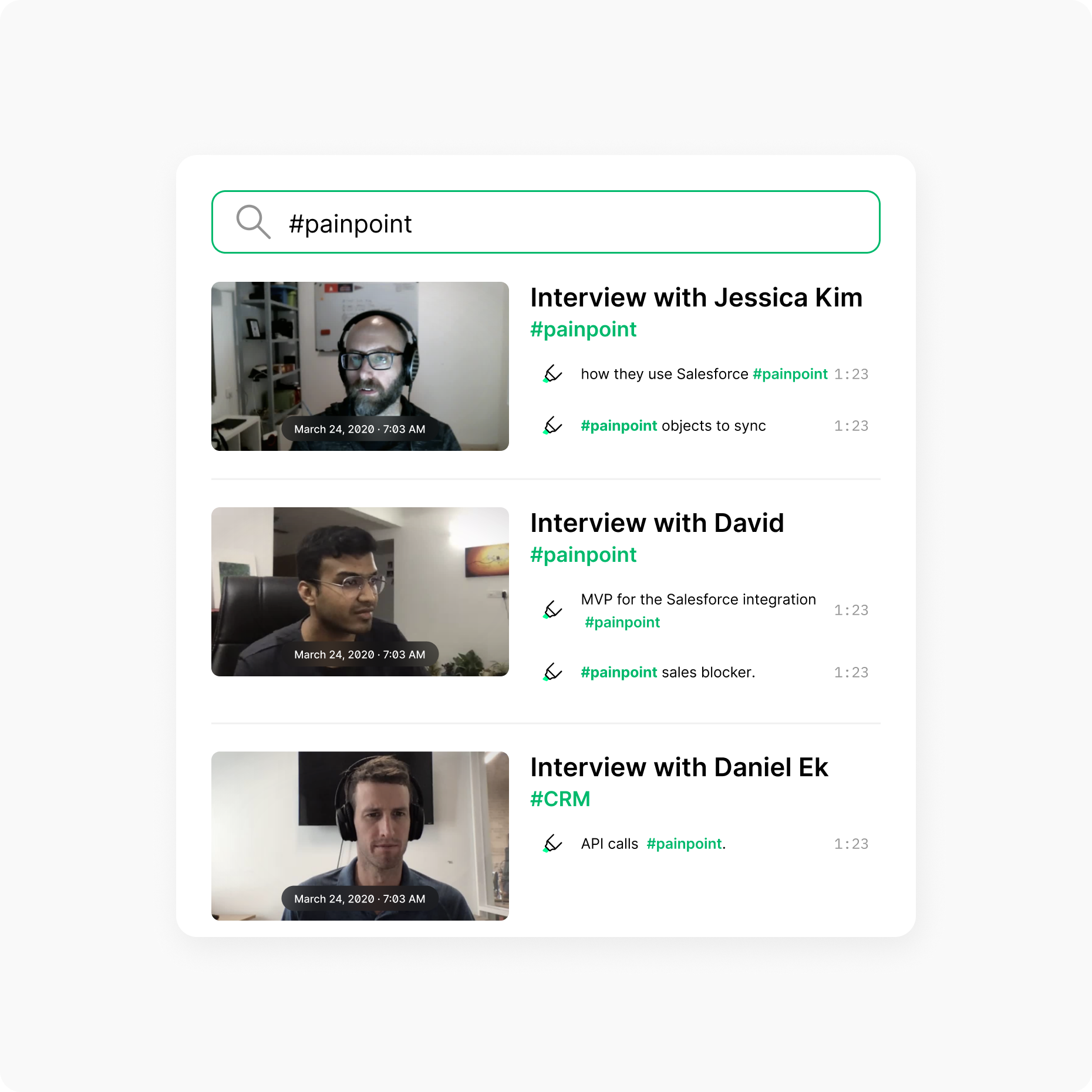How Sendoso Conducts Continuous Research using Grain
October 21, 2024

Today, product development has become more iterative and agile than ever. To adapt, successful companies have started embedding researchers in product teams with the hopes of making research a continuous process and keeping it in touch with their customers.
But it only solves half the problem.
Researchers still need a way to easily capture, synthesize, extract, and share insights with stakeholders—on an ongoing basis.
We had a chance to talk to Emily Arciprete, a Sr. UX researcher embedded in the product team at Sendoso, to learn how she consistently extracts and socializes research insights and drives better product decisions.
Capturing Insights
As a researcher, it’s crucial for you to capture insights from your research sessions. But if you start taking manual notes, it can get in the way of listening to your users. Emily uses Grain to record her user interviews—capturing the video along with what was exactly said.
“As much as I love to write down lots of notes during a call, my goal as a researcher is to be highly engaging and attentive. Grain allows me to do that.”
Once the session ends, she can get back to the recording to clip out key insights and user feedback on her own time. Every research session at Sendoso, whether it's a user interview, usability testing, or concept testing, is now being recorded by Grain.
Analyzing and Synthesizing Qualitative Data
One of the challenges of consistent research is analyzing and synthesizing heaps of qualitative data to identify key insights.
The research team at Sendoso continuously engages with customers for various projects happening at the same time. To make it easier to process, analyze, and synthesize data, Emily implemented a two-step process.
1. Key moments from customer interviews are not only clipped but also tagged based on the subject and the research goals. Tagging allows the team to quickly rediscover and review the feedback at any point during or after the research. They just need to hit Search and type in the tag name.

2. The clips are then organized into a Google sheet grid to identify common patterns and create high-level insights (roll-up of feedback across all user calls).

Credit: Emily Arciprete
Sharing and Socializing Research Findings
Your research is only as valuable as its reach. If you’re doing research without socializing the gathered insights, it might not have much positive impact for your users.
“Research is about appropriately marketing the insights”
Emily ensures that the customer insights reach the stakeholders through different channels in different formats. The format and the channel depend on the recipient.
If the product or design team has a quick question about a high-level insight, Emily will send the highlight clip through Slack—so that they can listen to the users directly. On the contrary, if you’re a stakeholder who couldn’t attend the research call, Emily will create a highlight reel—packaging the critical moments from the interview—and then share it with you.👇
Emily also uses the highlight clips as “receipts” to back her findings and to share the customers’ struggles in their own words. In other words, highlight clips enable the research team to advocate for users and get their feedback into the product roadmap.
Finally, after the end of the research, the research team puts together a key presentation where highlight clips are embedded—to let the audience hear directly from the customers.
“I’ll download and include the hard-hitting clips from the interviews in the deck. They are really powerful and they also make the presentation more engaging.”
Level Up Your Research Using Grain
As a researcher, it has become imperative for you to keep up with rapid development cycles. The research team at Sendoso leverages Grain to easily capture, synthesize, and socialize insights. The research projects are in sync with product sprints—and customer feedback continues to inform product development.